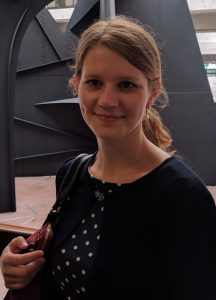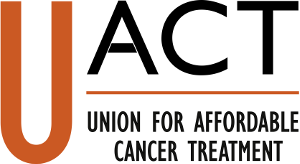By Julie Chmelikova
There are currently 28 EU member states, yet their health care systems vary substantially and are based on national policies. Reimbursement models, health care expenditures, availability of resources and accessibility of drugs are just some of the aspects of health care where major differences occur. Access to cancer drugs is an especially pressing issue that demonstrates vividly the differences in access to health care across the EU. The inequality is evident for example in the case of Poland, Hungary and Slovakia, where patients do not have access to many innovative cancer drugs, such as Kadcyla (breast cancer), Jevtana (prostate cancer), Dacogen (acute myeloid leukemia) or Xalkori (lung cancer). However, what all European countries have in common is the increasing cost of cancer drugs that need to be widely available in order to save lives of millions of European citizens.
care expenditures, availability of resources and accessibility of drugs are just some of the aspects of health care where major differences occur. Access to cancer drugs is an especially pressing issue that demonstrates vividly the differences in access to health care across the EU. The inequality is evident for example in the case of Poland, Hungary and Slovakia, where patients do not have access to many innovative cancer drugs, such as Kadcyla (breast cancer), Jevtana (prostate cancer), Dacogen (acute myeloid leukemia) or Xalkori (lung cancer). However, what all European countries have in common is the increasing cost of cancer drugs that need to be widely available in order to save lives of millions of European citizens.
There are over 2.6 million new cases of cancer in the EU every year based on the EY Poland research. Cancer is the main cause of death in individuals aged 20-64 years and the second leading cause of death in the entire European population. It should come as no surprise that higher-income countries, such as the Netherlands, France or Austria have a significantly higher survival rate compared with lower-income countries, such as Poland or Hungary. The variations in health care expenditures are tremendous in Europe. For example, health care expenditure per capita was only 697 EUR in Poland compared with 3,631 EUR in France and cancer care expenditure per capita was 42 EUR in Poland compared with 156 EUR in France in 2014.
According to research conducted by EY Poland in 2015, 18 out of 30 analyzed innovative cancer drugs are reimbursed in Poland but only 2 of them are available without any restrictions. In contrast to Poland, all 30 drugs are available without any restrictions in the Netherlands. A study produced by the IMS Institute for Healthcare Informatics analyzing the availability of cancer drugs launched between 2010 and 2014, confirms the disparities across the EU, showing that new cancer drugs are available in Western European countries sooner than in Eastern European countries.
However, it is evident that oncology drugs are becoming unaffordable even in the higher-income countries. Globally, costs of oncology drugs grew to reach $107 billion in 2015 and the annual growth in prices is expected in the 7.5 – 10.5% range through 2020. According to the WHO 2015 report the cost of new cancer drugs ranges between US$ 6,000 and US$ 10,000 per month.
Increasingly more EU citizens are realizing the seriousness of the situation. For example, a survey from 2014, in which 3,649 subjects took part, compares public perception of cancer care in Austria and Poland. Only 18% of Poles versus 62% of Austrians consider the available cancer treatment in their countries a standard comparable to that of other EU countries. Moreover, only 25% of Poles and 72% of Austrians agree with the statement that country’s insurance system provides good cancer care. Finally, 24% of Poles and 7% of Austrians believe that financial status, age, gender, and residence play a role in availability of cancer treatments. The accuracy of public perception was confirmed by the Euro Health Consumer Index (EHCI) report on 33 European countries, where the Polish and Austrian health care systems were ranked 32nd and 10th, respectively.
There are many obstacles to introducing new drugs to the market, as elaborated on in a 2014 study entitled Hurdles and Delays in Access to Anti-cancer Drugs in Europe. A new drug must obtain regulatory and reimbursement approval and succeed in changing the prescription habits of physicians in order to be incorporated into daily practice. These obstacles also vary depending on a specific country.
The EU member states share a common procedure for granting marketing authorisation for cancer drugs, however, EU national governments assume authority over pricing and reimbursement decisions. As a result, each of the 28 EU member states has a different health care system based on a different set of policies and priorities. The challenges of obtaining reimbursements are often related to the vast differences in incomes among EU member governments.
The EU has to face the fact that soaring prices of cancer drugs are unsustainable even for higher-income countries and that a new approach is needed for the future in order to save lives of millions of citizens. The considerable cost of R&D cannot be overlooked in this context. The core problem for pricing is the government-granted monopoly achieved through patents and other legal barriers to competition. The purpose of patents is to provide robust incentives for companies to invest in R&D.
However, increasing attention is now being given to new business models for R&D, where there is an alternative to government-granted monopolies, so that one can have low prices, without a decrease in the investments in new products. This alternative approach emphasizes the need to eliminate the link between the high prices of medicines and investments into medical R&D. In order to finance R&D, the delinkage models combine expanded government funding for drug development in the form of direct funding or subsidies and very large cash rewards to researchers and successful drug developers.
The European Union should undertake a feasibility study to see if delinkage models can be used for cancer drugs, in order to ensure that all cancer patients have access to the drugs that work the best for them.
The current system of granting a time limited monopoly creates a conflict between innovation and access, and predictably leads to unfairness and avoidable premature deaths. If unequal and limited access to new drugs is necessary for innovation, we may accept it. But if the unequal and limited access is a feature of a flawed system, it is time to change it.
